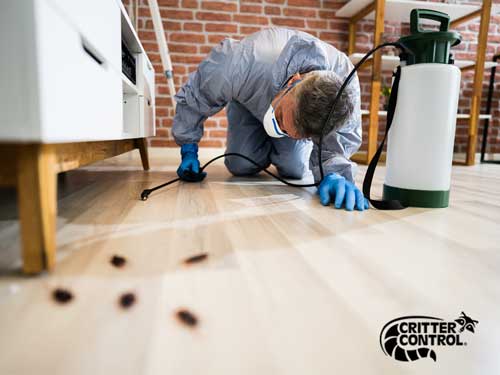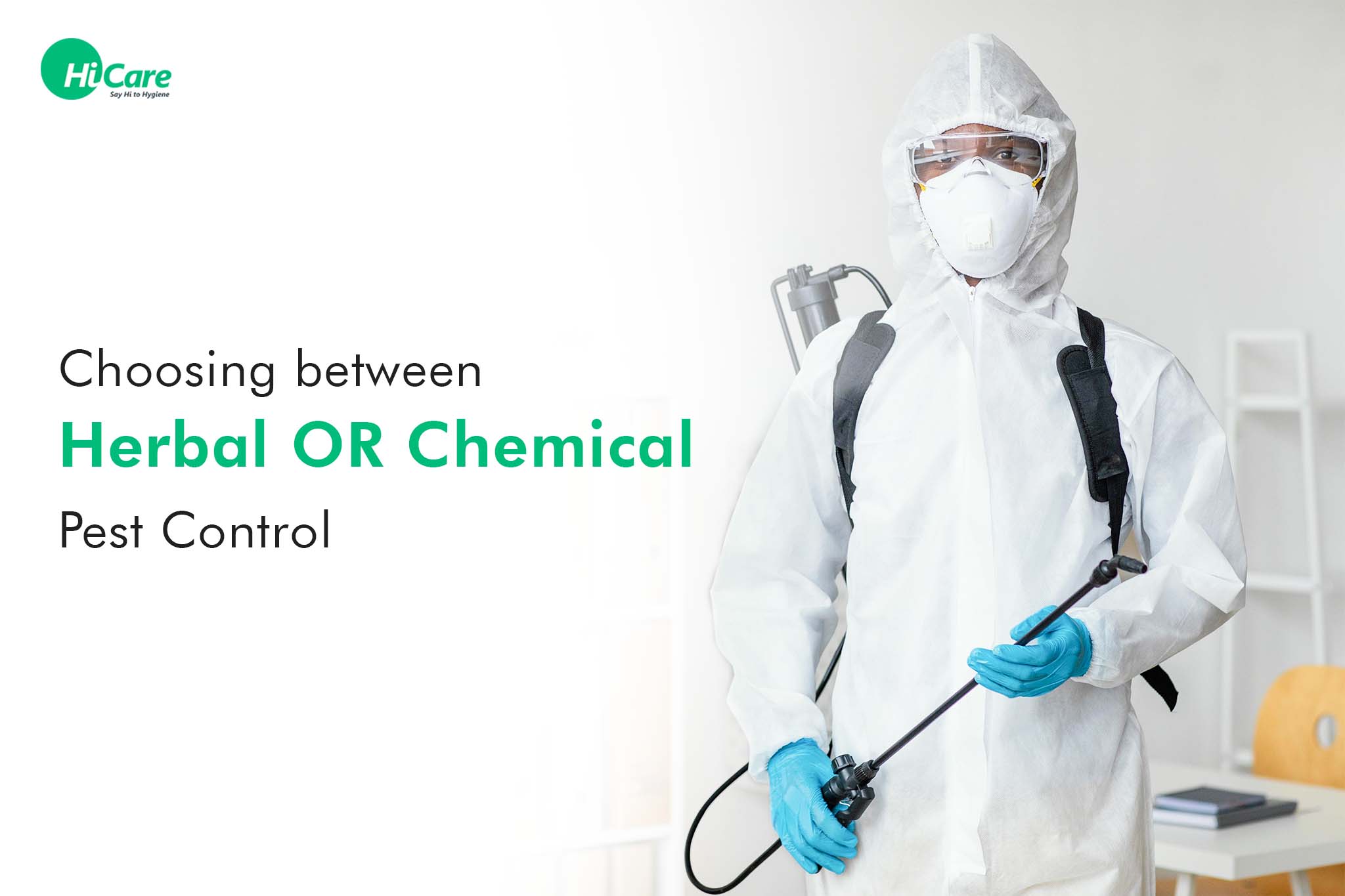A1 Pest Control Portland Bed Bugs - Professional Extermination Provider
A1 Pest Control Portland Bed Bugs - Professional Extermination Provider
Blog Article
Effective Pest Control Providers: A Thorough Check Out Extermination Techniques and Avoidance Actions
In the world of insect control services, the effective management of invasions calls for a meticulous method that integrates numerous strategies and procedures for both elimination and prevention. From Integrated Pest Administration (IPM) methods that prioritize sustainable services to chemical extermination methods made for targeted removal, the arsenal against bugs is complex and substantial.

Integrated Pest Monitoring (IPM) Methods
Integrated Pest Monitoring (IPM) Techniques incorporate a detailed approach to pest control that concentrates on surveillance, control, and prevention techniques to efficiently take care of parasite populations. By integrating various methods, IPM intends to lessen the effect of bugs while likewise decreasing the reliance on chemical pesticides. Prevention exists at the core of IPM, emphasizing methods like correct sanitation, maintenance of health, and securing access points to hinder pests from infesting buildings. Tracking plays a critical role in IPM by on a regular basis recognizing and evaluating pest levels to identify the proper intervention thresholds. Control methods in IPM prioritize the use of physical, biological, and social techniques before transforming to chemical treatments as a last hope. These methods consist of presenting natural predators, habitat modification, and employing trapping devices to maintain pest populations in check. Generally, IPM promotes a lasting and ecologically conscious method to pest administration, promoting long-lasting solutions that protect both human health and wellness and the environment.
Chemical Extermination Techniques
Chemical elimination strategies are typically utilized in bug control solutions to properly get rid of bug populations that pose a danger to human health and property. These strategies include making use of different chemical materials particularly made to target and eliminate pests such as bugs, rats, and other undesirable animals. The application of pesticides, insecticides, rodenticides, and other chemical representatives is very carefully regulated to make sure optimum effectiveness while lessening risks to people, pet dogs, and the environment.
One of the vital advantages of chemical elimination methods is their ability to offer fast and targeted outcomes, making them particularly helpful in instances of extreme invasions or immediate parasite control demands - a1 commercial pest control portland. However, it is vital to stress the relevance of proper handling, application, and disposal of these chemical products to stop unintentional damage
Additionally, incorporated bug monitoring (IPM) strategies often combine chemical extermination techniques with other techniques such as cleanliness, habitat modification, and biological controls to create a sustainable and extensive insect control technique. By incorporating chemical extermination strategies carefully within an IPM structure, bug control services can efficiently manage pest populaces while minimizing potential risks to human wellness and the setting.
Biological Insect Control Methods
Utilizing natural killers and bloodsuckers to handle pest populaces is a sustainable method known as organic insect control. portland exterminators a1 for bed bugs. One common organic control method entails introducing all-natural adversaries of the target insect varieties, such as ladybugs for aphid control or nematodes for termite infestations.
One more reliable biological control approach is using microbial pesticides. These are normally occurring bacteria, such as infections, fungi, and germs, that specifically target and infect specific parasite species. By utilizing these microbial agents, bug populaces can be properly lowered without harming valuable microorganisms or causing damage to the setting.
Physical Parasite Avoidance Measures
Implementing physical bug avoidance actions entails making use of obstacles and architectural adjustments to prevent parasites from entering or infesting a home (a1 residential pest control portland or bed bugs). One efficient approach is securing all prospective entrance points such as voids around doors, home windows, and energy infiltrations. Setting up door sweeps, displays on home windows, and sealing cracks in the foundation can aid protect against parasites like pests and rodents from acquiring access inside. Furthermore, maintaining a clutter-free and tidy atmosphere is important as bugs is termite control necessary are attracted to food resources and concealing places. Routinely inspecting and fixing any type of damaged screens, vents, or roofing system ceramic tiles can likewise assist in keeping parasites out.
One more physical prevention step is making use of obstacles like fencing to keep bigger pests such as deer or raccoons away from the home. Mounting mesh or wire screens around gardens can shield plants from being harmed by insects. Correct waste management, consisting of safeguarding trash bin with tight-fitting covers, is necessary in hindering pests like raccoons, rodents, and bugs. By implementing these physical insect prevention procedures, homeowner can significantly reduce the risk of insect invasions and the damages they can trigger.
Professional Parasite Examination Procedures
Conducting systematic and thorough bug evaluations is a fundamental facet of professional parasite administration procedures. Professional parasite examiners are educated to cockroach prevention carefully examine residential or commercial properties for indicators of problems, determining pest species, entrance factors, and conducive problems. The inspection procedure normally begins with a detailed analysis of both the exterior and interior of the premises. This includes checking for bug droppings, nibble marks, nests, and any type of architectural damage that may show pest activity. In addition, inspectors may utilize customized tools such as wetness meters and borescopes to detect covert problems within walls or crawl spaces.

Verdict
In conclusion, efficient parasite control services employ a range of strategies, consisting of Integrated Pest Administration approaches, chemical elimination methods, biological controls, and physical avoidance measures. Expert bug examination treatments play an essential function in identifying and dealing with pest problems in a timely way. By carrying out a mix of these strategies, homeowner can effectively manage and prevent bug invasions.
From Integrated Bug Administration (IPM) strategies that prioritize lasting solutions to chemical extermination strategies made for targeted removal, the collection versus insects is diverse and large.Integrated Pest Management (IPM) Approaches incorporate a detailed technique to pest control that focuses on avoidance, control, and tracking methods to efficiently manage parasite populations.Chemical extermination strategies are commonly used in insect control services to properly eliminate pest populaces that position a hazard to human wellness and property.Utilizing click natural killers and parasites to take care of insect populaces is a sustainable technique recognized as organic pest control.In verdict, effective parasite control services use a range of techniques, consisting of Integrated Pest Administration techniques, chemical elimination methods, organic controls, and physical avoidance steps.
Report this page